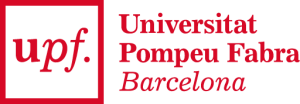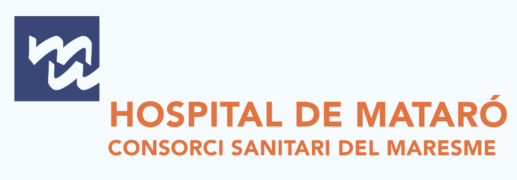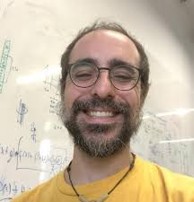Challenge CURVAS-PDACVI
Second Edition
This challenge is hosted in Grand Challenge: https://curvas-pdacvi.grand-challenge.org/
New version of the training dataset has been published in Zenodo with the vascular structures segmentations included: https://zenodo.org/records/15593628
INTRODUCTION
In medical imaging, Deep Learning (DL) models are often tasked with delineating structures or abnormalities within complex anatomical structures, such as tumors, blood vessels, or organs. Uncertainty arises from the inherent complexity and variability of these structures, leading to challenges in precisely defining their boundaries. This uncertainty is further compounded by interrater variability, as different medical experts may have varying opinions on where the true boundaries lie. DL models must grapple with these discrepancies, leading to inconsistencies in segmentation results across different annotators and potentially impacting diagnosis and treatment decisions.
Addressing interrater variability in DL for medical segmentation involves the development of robust algorithms capable of capturing and quantifying uncertainty, as well as standardizing annotation practices and promoting collaboration among medical experts to reduce variability and improve the reliability of DL-based medical image analysis. Interrater variability poses significant challenges in the field of DL for medical image segmentation.
This challenge is designed to promote awareness of the impact uncertainty has on clinical applications of medical image analysis. In our last-year edition, we proposed a competition based on modeling the uncertainty of segmenting three abdominal organs, namely kidney, liver and pancreas, focusing on organ volume as a clinical quantity of interest. This year, we go one step further and propose to segment pancreatic pathological structures, namely Pancreatic Ductal Adenocarcinoma (PDAC), with the clinical goal of understanding vascular involvement, a key measure of tumor resectability. In this above context, uncertainty quantification is a much more challenging task, given the wildly varying contours that different PDAC instances show.
This year, we will provide a richer dataset, in which we start from an already existing dataset of clinically verified contrast-enhanced abdominal CT scans with a single set of manual annotations (provided by the PANORAMA organization, which we invite to be part of our challenge), and make an effort to construct four extra manual annotations per PDAC case. In this way, we will assemble a unique dataset that creates a notable opportunity to analyze the impact of multi-rater annotations in several dimensions, e.g. different annotation protocols or different annotator experiences, to name a few.
TIMELINE

Training Set Release
Validation Submission Open
Test Submission Open
Release Date of the Results

September 23rd-27th 2025, meet us at Daejeon for MICCAI 2025!
DATASET
The challenge cohort consists of 125 CT scans selected from the PANORAMA challenge dataset. Selection prioritized scans with manually generated labels, excluding those with automated annotations. Preference was also given to cases with conclusive diagnostic tests (e.g., pathology, cytology, histopathology). To ensure real-world representativeness, lesion sizes were assessed to cover a broad range of cases, while patient demographics, including sex and age, were considered to minimize bias.
The target age distribution is as follows: below 50 years (5%), 50–59 years (15%), 60–69 years (20%), 70–79 years (30%), and 80–89 years (30%). Sex distribution aims for 40-50% females and 50-60% males. For tumor location, approximately 60-70% of cases involve the head of the pancreas, 15-25% the body, and 10-15% the tail.
Each CT has the following structure:
- annotation_X.nii.gz: contains the Pancreatic Ductal Adenocarcinoma (PDAC) segmentations (X=1 being the PANORAMA segmentation, X=2,..,5 being the other experts segmentations).
- vascular_annotation.nii.gz: contains the vascular structures that will be analyzed in the challenge. They are the following: Porta (=1), Superior Mesenteric Vein (SMV) (=2), Aorta (=3), Celiac Trunk (=4) and Superior Mesenteric Artery (SMA) (=5).
- image.nii.gz: CT volume
Each CT has four additional annotations from radiologists at Universitätsklinikum Erlangen, Hospital de Sant Pau, and Hospital de Mataró. Hence, four new annotations plus the PANORAMA annotation will be provied. Another clinician, focused on modifying the annotations from the vascular structures of the PANORAMA dataset and separated veins and arteries in single strcutures segmentations. This structures are the ones considered highly relevant for the study of Vascular Invasion (VI): Porta, Superior Mesenteric Vein (SMV), Superior Mesenteric Artery (SMA), Aorta and Celiac Trunk. The vascular annotations are not needed for providing the results, but this way the participants can test their algorithms with the evaluation code.
Training Phase cohort:
40 CT scans the respective annotations will be given. It is encouraged to leverage publicly available external data annotated by multiple raters. The idea of giving a small amount of data for the training set and giving the opportunity of using a public dataset for training is to make the challenge more inclusive, giving the option to develop a method by using data that is in anyone’s hands. Furthermore, by using this data to train and using other data to evaluate, it makes it more robust to shifts and other sources of variability between datasets.
The data coming from the PANORAMA Batch 1 (https://zenodo.org/records/13715870), Batch 2 (https://zenodo.org/records/13742336), and Batch 3 (https://zenodo.org/records/11034011), cannot be used. Batch 4 (https://zenodo.org/records/10999754) may be used.
The training set can be found in https://zenodo.org/records/15593628
Find our evaluation and baseline code from previous edition in our Github: https://github.com/SYCAI-Technologies/curvas-challenge
Validation Phase cohort:
5 CT scans will be used for the validation phase.
Test Phase cohort:
80 CT scans will be used for evaluation.
Both validation and testing CT scans cohorts will not be published until the end of the challenge. Furthermore, to which group each CT scan belongs will not be revealed until after the challenge.
RANKING AND PRICES
Top five performing methods will be announced publicly. Winners will be invited to present their methods and results in the challenge event hosted in MICCAI 2025.
Two members of the participating team can be qualified as author (one must be the person that submits the results). The participating teams may publish their own results separately only after the organizer has published a challenge paper and always mentioning the organizer’s challenge paper.

ORGANIZERS

Sycai Medical
Meritxell Riera i Marín, PhD Candidate
Javier García López, PhD
Júlia Rodríguez Comas, PhD
Universitat Pompeu Fabra
Miguel Angel González-Ballester, PhD
Sikha O K, PhD
IN COLLABORATION WITH



Hospital de la Santa Creu i Sant Pau
Antón Aubanell, MD
Uniklinikum Erlangen
Ruben de Figueiredo Cardoso, MD
Saskia Eggerhacken, MD
Consorci Sanitari del Maresme – Hospital de Mataró
Montserrat Duh, MD
TECHNICAL AND SCIENTIFIC COMMITTEE






Dr. Pierre-Henri Conze
IMT Atlantique, LaTIM UMR 1101 INSERM (France)
Dr. Adrián Galdrán
Tecnalia (Spain)
Rami Eisawy
Image Based Biomedical Modeling Group (IBBM) and technical lead at DeepC (Germany)
Dr. Inez Verpalen
Amsterdam University Medical Center (UMC) (Netherlands)
Dr. Matthias May
Uniklinikum Erlangen (Germany)
Dr. Juan Carlos Pernas Canadell
Hospital de Sant Pau i de la Santa Creu (Spain)
SUPPORTED BY








